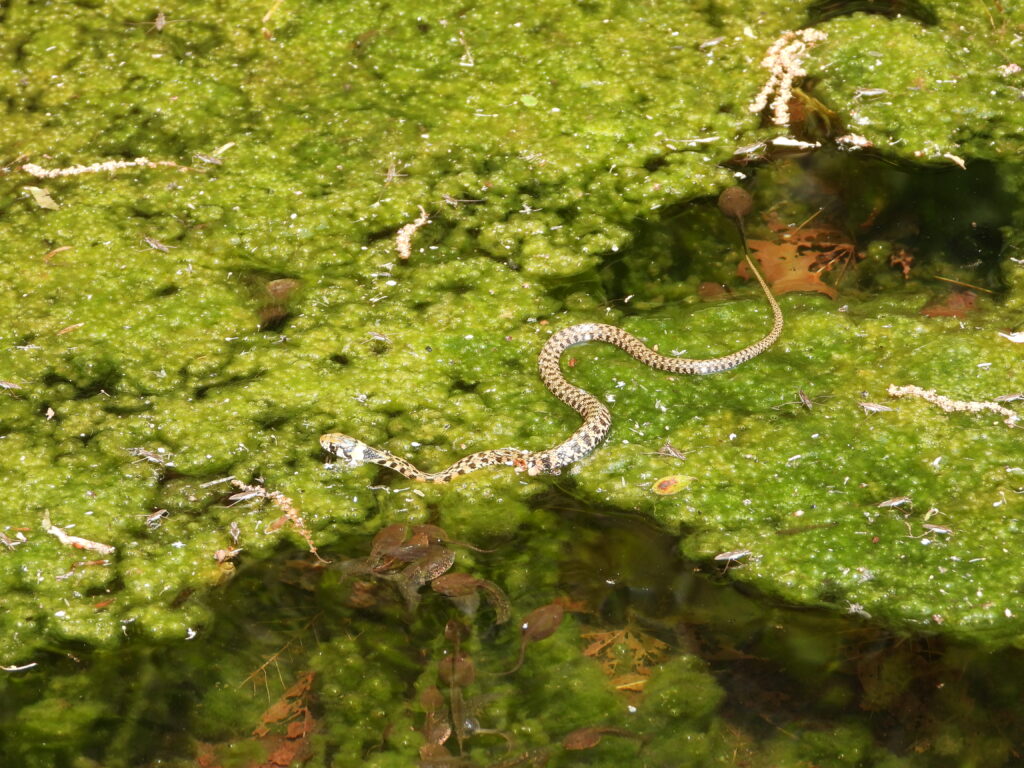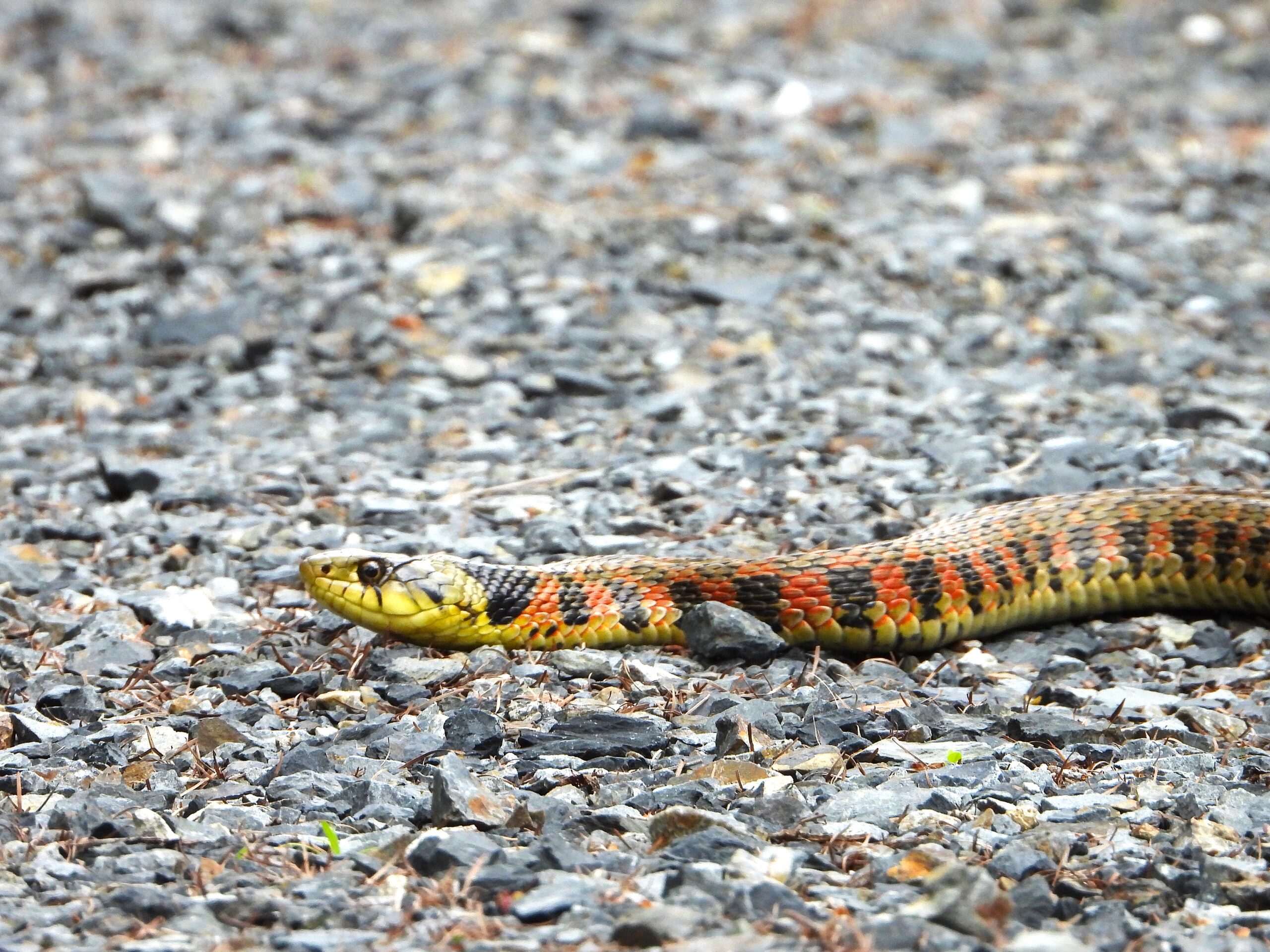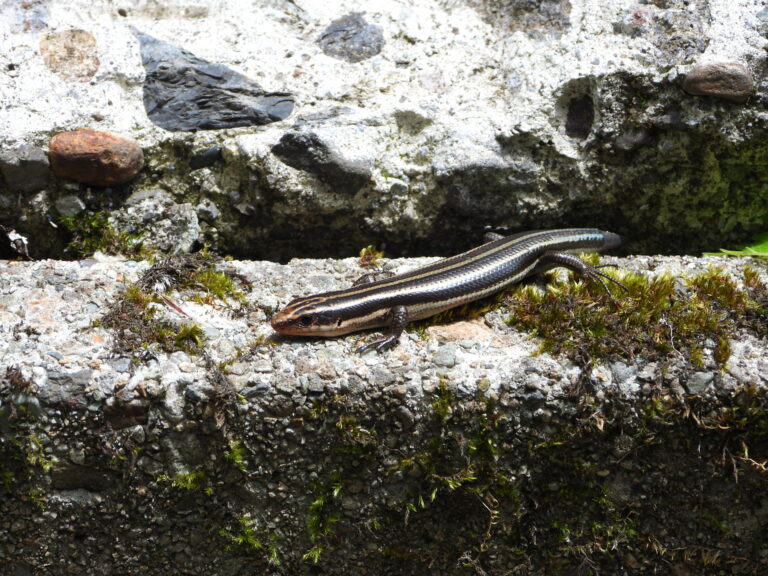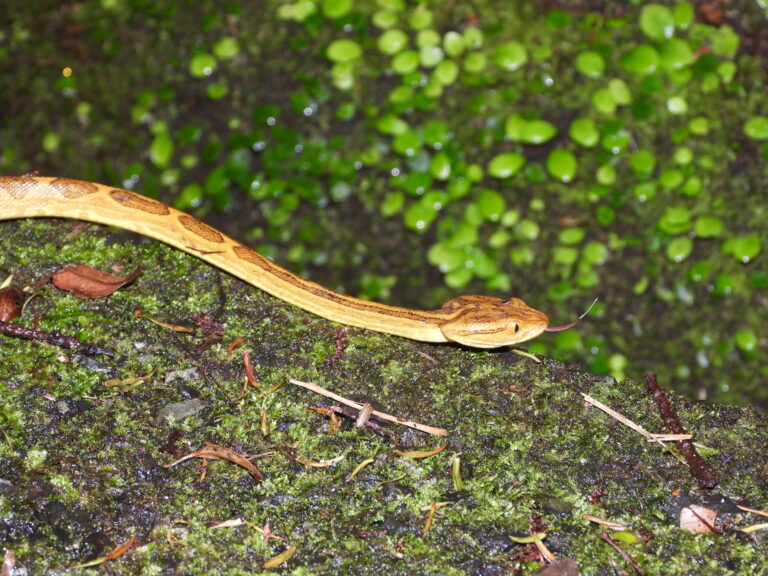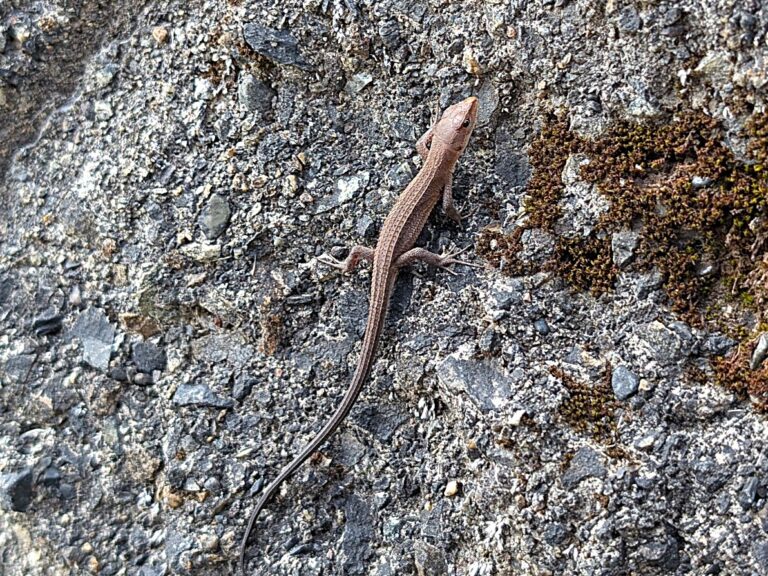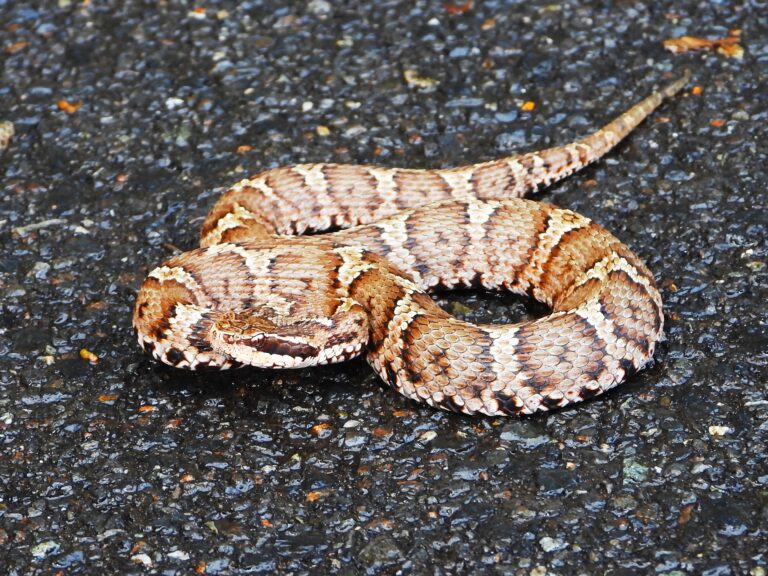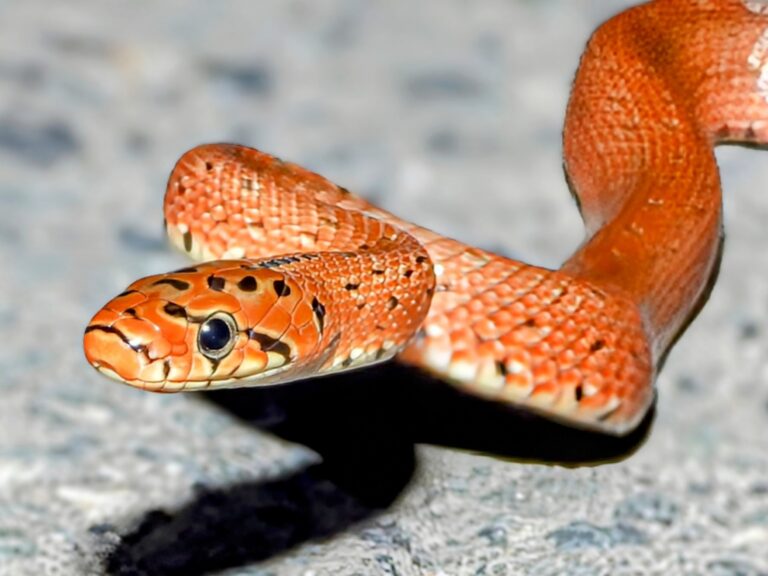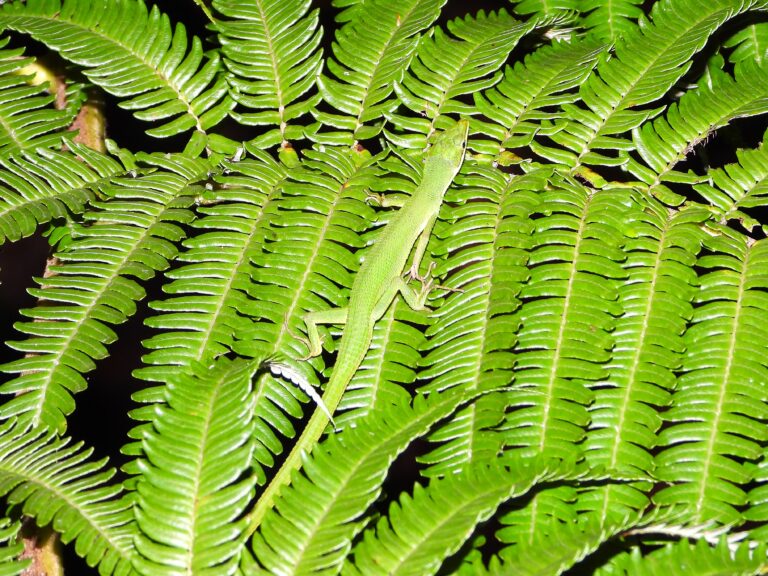Tiger Keelback (Rhabdophis tigrinus) – Wildlife of Japan
Introduction
The Tiger Keelback, or yamakagashi, lives widely across Japan. This venomous snake favors wetlands, rice paddies, and streams. It usually stays shy and avoids people, yet a bite can cause serious symptoms. Behind the head it has nuchal glands—defensive skin glands that exude toxins the snake often sequesters from toads. Never handle this species.
Appearance
Adults measure 70–100 cm. The body shows olive to gray-brown tones with dark crossbars, and many snakes display bright orange or red patches on the neck or along the back. Keeled scales create a rough, matte look. The head is slightly distinct from the neck, and the pupils are round. Juveniles show bolder patterns.
Habitat
The species occupies wetlands from lowlands to mountains. It hunts around rice fields, ditches, marshes, slow streams, and ponds. After rain, observers often spot it along paddy embankments.
Behavior
It moves by day and swims well. When alarmed, it flattens the neck and arches the body. If provoked, it exudes toxins from the nuchal glands. The snake rarely bites, yet a bite can be serious. As a rear-fanged species, a deep or prolonged bite increases the risk of venom delivery. Watch from a safe distance and never try to capture it.
Diet
It feeds mainly on frogs and toads, and also takes tadpoles and small fish. The snake sequesters toad toxins and stores them in the nuchal glands for defense.
Reproduction
This species lays eggs (oviparous). Adults mate in spring. Females lay eggs in early to mid-summer in damp sites under vegetation or debris. A clutch holds about 7–20 or more eggs. Hatchlings emerge in late summer or early autumn.
Conservation
Global assessments do not list the Tiger Keelback as threatened. Local numbers drop where people drain wetlands, amphibians decline, or roadkill increases. Outreach helps people see that, while dangerous, this native snake plays a key role in wetland ecosystems.
Author’s Impression
The Tiger Keelback is one of Japan’s most colorful and striking snakes. But it is dangerous, so never try to catch it. Enjoy it from a safe distance. Its fangs sit far back in the mouth, and some say shallow bites cause less harm—but it still feels like a truly frightening species.
